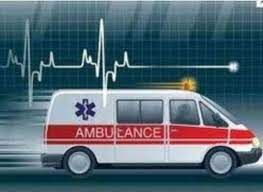- Home
- About Us
- Industry
- Services
- Reading
- Contact Us
Global Ambulance Services Market is expected to foresee significant growth. APAC to lead the growth!
Author: Vikas Kumar
July 7, 2022

Global ambulance services market is expected to register a CAGR of around 8% over the period of 2021-2027. This is mainly due to the rise in the incidence of traumatic accidents, an increase in the number of people suffering from various chronic diseases, a growing volume of patient data, technological advancements, coupled with the growth in the geriatric population, and the stringent government regulations coupled with the growing focus of major stakeholders in the healthcare industry to adopt to make products and services more sustainable and eco-friendlier in healthcare further supports the growth of this market. For instance, an estimated 1.2 million people are killed in road accidents every year, and an estimated 50 million are injured, receiving 30 to 70% of bone marrow transplants in developing countries. Thus, with the growing incidence of road accidents, disorders, and stroke, the demand for ambulance services will increase, thereby driving the ambulance services market. Moreover, growing demand for quality healthcare services, and well-established healthcare infrastructure. Therefore, the market for ambulance services is expected to witness significant growth during the forecast period.
For a detailed analysis of the Global Ambulance services Market browse throughhttps://univdatos.com/report/ambulance-services-market/
Based on mode of transportation, the market is categorized into an air ambulance, ground ambulance, and water ambulance. Among these, the ground ambulance is expected to witness the highest CAGR during the forecast period as they provide many modes of transport such as pickup trucks, cars, motorcycles, bicycles, all-terrain vehicles, golf carts, and buses. Furthermore, the rising geriatric population coupled with rising cases of cardiovascular disorders is also one of the prime factors contributing to the growth of this segment.
Based on services, the market is categorized into emergency medical services and non-emergency medical services. Among these, the emergency medical services segment is expected to witness the highest CAGR during the forecast period. This is mainly due to the prevalence of cardiovascular disorders such as cardiac arrest, heart failure, stroke, and increased cases of coronavirus pandemics all over the world are all contributing to the expansion of the emergency services segment is expected to grow the market during the forecast period.
Based on payer, the market is categorized into public, private, and out-of-pocket. Among these, the private payer segment is expected to witness the highest CAGR during the forecast period. The private payer is attributed to the growing popularity of ambulance services coupled with the various initiatives to deliver efficient ambulance services at a certain price. Private payers offer numerous types of plans to meet the basic standards specifically set by the government. The payers from the ambulance services market are anticipated to have lucrative growth opportunities in the future with the rising demand for the ambulance services market in the global market.
Request for Sample of the report browse throughhttps://univdatos.com/get-a-free-sample-form-php/?product_id=21990
For a better understanding of the market adoption of the Ambulance services industry, the market is analyzed based on its worldwide presence in the countries such as North America (US, Canada, Rest of North America); Europe (Germany, UK, France, Italy, Spain, and Rest of Europe); Asia-Pacific (China, Japan, India, Australia, Rest of Asia-Pacific), and Rest of World. North America is expected to witness the highest CAGR during the forecast period on account of the growing incidence of chronic diseases coupled with the geriatric population, and rising burn-in countries like the U.S. and Canada. The rising clinical research activity and new product launches, easy accessibility to advanced technologies, government initiatives for healthcare services, and favorable reimbursement scenario for ambulance services diagnostic tests, owing to the presence of well-established market players and frequent service launches in the region. For instance, according to U.S. Fire Administration, in the U.S. around 1.29 million burn injuries took place in the year 2019. Similarly, according to the Joye Law Firm, on an average, about 450,000 burn injuries are registered in the U.S. alone. Furthermore, the increased consumer awareness regarding the availability of various ambulance services and treatments will drive market growth.
Some of the major players operating in the market include Acadian Ambulance Service, Inc., Air Methods Corporation, AirMed International LLC, American Medical Response, Babcock Scandinavian AirAmbulance, BVG India Ltd., European Air Ambulance, Express Air Medical Transport, LLC, Falck Danmark A/S, Global Medical Response.
Global Ambulance Services Market Segmentation
Market Insight, by Mode of Transportation Air ambulance• Ground ambulance• Water ambulance
Market Insight, by Services
• Emergency medical services
• Non-emergency medical services
Market Insight, by Equipment
- Basic Life Support (BLS)
- Advanced Life Support (ALS)
Market Insight, by Payer
- Public
- Private
- Out-of-pocket
Market Insight, by End User
Market Insight, by Region
- North America
- U.S.
- Canada
- Rest of North America
- Europe
- Germany
- UK
- France
- Italy
- Spain
- Rest of Europe
- Asia-Pacific
- China
- Japan
- India
- Australia
- Rest of Asia-Pacific
- Rest of World
Top Company Profiles
• Acadian Ambulance Service, Inc.
• Air Methods Corporation• AirMed International LLC• American Medical Response• Babcock Scandinavian AirAmbulance• BVG India Ltd.• European Air Ambulance• Express Air Medical Transport, LLC• Falck Danmark A/S• Global Medical Response
Get a Callback
